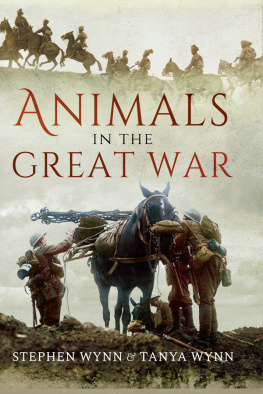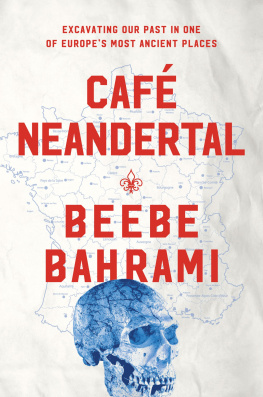Wynn - How To Think Like a Neandertal
Here you can read online Wynn - How To Think Like a Neandertal full text of the book (entire story) in english for free. Download pdf and epub, get meaning, cover and reviews about this ebook. City: USA, year: 2012, publisher: Oxford University Press, genre: Art. Description of the work, (preface) as well as reviews are available. Best literature library LitArk.com created for fans of good reading and offers a wide selection of genres:
Romance novel
Science fiction
Adventure
Detective
Science
History
Home and family
Prose
Art
Politics
Computer
Non-fiction
Religion
Business
Children
Humor
Choose a favorite category and find really read worthwhile books. Enjoy immersion in the world of imagination, feel the emotions of the characters or learn something new for yourself, make an fascinating discovery.

How To Think Like a Neandertal: summary, description and annotation
We offer to read an annotation, description, summary or preface (depends on what the author of the book "How To Think Like a Neandertal" wrote himself). If you haven't found the necessary information about the book — write in the comments, we will try to find it.
Wynn: author's other books
Who wrote How To Think Like a Neandertal? Find out the surname, the name of the author of the book and a list of all author's works by series.
How To Think Like a Neandertal — read online for free the complete book (whole text) full work
Below is the text of the book, divided by pages. System saving the place of the last page read, allows you to conveniently read the book "How To Think Like a Neandertal" online for free, without having to search again every time where you left off. Put a bookmark, and you can go to the page where you finished reading at any time.
Font size:
Interval:
Bookmark:
How to Think Like a Neandertal
THOMAS WYNN
AND
FREDERICK L. COOLIDGE


Oxford University Press, Inc., publishes works that further
Oxford Universitys objective of excellence
in research, scholarship, and education.
Oxford New York
Auckland Cape Town Dares Salaam Hong Kong Karachi
Kuala Lumpur Madrid Melbourne Mexico City Nairobi
New Delhi Shanghai Taipei Toronto
With offices in
Argentina Austria Brazil Chile Czech Republic France Greece
Guatemala Hungary Italy Japan Poland Portugal Singapore
South Korea Switzerland Thailand Turkey Ukraine Vietnam
Copyright 2012 by Oxford University Press, Inc.
Published by Oxford University Press, Inc.
198 Madison Avenue, New York, New York 10016
www.oup.com
Oxford is a registered trademark of Oxford University Press
All rights reserved. No part of this publication may be reproduced,
stored in a retrieval system, or transmitted, in any form or by any means,
electronic, mechanical, photocopying, recording, or otherwise,
without the prior permission of Oxford University Press.
Library of Congress Cataloging-in-Publication Data
Wynn, Thomas.
How to think like a Neandertal / by Thomas Wynn and Frederick L. Coolidge.
p. cm.
Includes bibliographical references and index.
ISBN 9780199742820 (hardback : alk. paper)
1. Neanderthals 2. Social archaeology 3. Ethnopsychology 4. Cognition and culture.
5. Human evolution I. Coolidge, Frederick L. (Frederick Lawrence), 1948 II. Title GN285.W96 2011 569.986dc23
2011028830
The cartoon on page 134 is used with permission of The New Yorker. Copyright Mike Stevens.
The New Yorker Collection/www.cartoonbank.com.
1 3 5 7 9 8 6 4 2
Printed in the United States of America
on acid-free paper
To our brothers, Tim Wynn and Tom Coolidge,
who inspired, encouraged, and tolerated us our entire lives.
THIS IS NOT a how to book for adolescent boys (of any age), nor is it a manual for survivalists who fear an imminent apocalypse. And it is not a satirical account of any political party, individual, or ideology, however deserving. It is a serious attempt to describe the thinking of a vanished and often maligned population of prehistoric people, the Neandertals.
Neandertals hold the distinction of being the only fossil human to have become a part of the standard vocabulary. Everyone who has had exposure to modern media has heard or seen the term, and most people carry some idea of who Neandertals were, though more often than not it is a caricature drawn from modern cinema or television: Iceman, Encino Man, Caveman, Quest for Fire (our favorite). There have been many fine academic books on the subject of Neandertals, some of which have been written for a general audience. They are thorough, and often a bit dull. Old bones and stone tools quickly lose their charm for the nonspecialist. What is often missing from serious accounts of Neandertals is any discussion of the questions many people find most interesting: What was it like to be a Neandertal? How were their lives similar to or different from ours?
This is the task we have taken on: to provide an account of the mental life of Neandertals, to the extent that it can be reconstructed from the fossil and archaeological remains. We are an archaeologist (TW) and a psychologist (FLC) who have been working together for a decade on topics in the evolution of cognition. Our approach uses established concepts in cognitive science to interpret paleoanthropological remains. We will describe specific archaeological remains, use explicit descriptions of cognitive abilities, and occasionally ask readers to accompany us on thought experiments. As we hope to show, it is in fact possible to describe some of the ways Neandertals thought about their world. In the process of painting this picture we will present some interesting but little appreciated insights into cognition in general. In the end, our account of Neandertal cognition should provide a perspective from which to view our own cognition, much of which we share with Neandertals, but some of which we do not.
How to Think Like a Neandertal
True Grit
Neandertals were prehistoric people who evolved in Europe and flourished between about 200,000 and 30,000 years ago. Right off the bat, with this seemingly innocuous sentence, we run into controversy. Referring to Neandertals as people is in fact a bit risky. Some in anthropology and psychology would prefer to reserve the term people, and especially the term human, for individuals and groups indistinguishable in all respects from people living today, at least biologically indistinguishable. They would prefer that we use the term hominin or hominid, which encompass living people and our ancestors and a number of bipedal cousins, going all the way back to our evolutionary split from apes some eight million years ago. They have a point: the terms human and people are certainly loaded with implications about behavior and cognition. This is precisely why we choose to use them. Neandertals were so similar to us anatomically and genetically that we believe the default positionthe null hypothesis, for readers familiar with scientific methodshould be that Neandertals were no different. We must then present sound arguments for any differences we propose. Our initial sentence contains a second controversy: Neandertal or Neanderthal? My word processor, for example, prefers the latter. When the first Neandertal was recognized and described in the 1850s, the German word for valley was spelled thal, and the find was made in the Neander Valley, hence Neanderthal. In the twentieth century the German spelling for thal changed to tal. Following an adherence to Linnaean rules for biological naming, some scholars argue that the original spelling has priority. Those who favor separate species status for Neandertals are also likely to take this stance, because the formal species name for Neandertals, if Neandertals were a separate species, is Homo neanderthalensis, a term introduced in the nineteenth century. Others argue that Neandertal is not a formal scientific label, and that we should follow current German usage. Take your pick; the terms are pronounced identically (i.e., no English th sound).
Neandertals evolved in Europe from an earlier hominin known as Homo heidelbergensis. We modern humans also evolved from Homo heidelbergensis, but in Africa. Fossil and genetic evidence indicates that these two groups separated from one another about half a million years ago, long enough for differences to evolve, but perhaps not long enough for them to become separate species, which would require that they not be able to breed and produce fertile off spring. At first Neandertals ancestors were restricted geographically to Europe, but by the time true Neandertals appeared about 200,000 years ago they had begun to move into western Asia. Eventually they moved as far east as Uzbekistan (north of Afghanistan) and throughout much of the Middle East. The last Neandertals appear to have been restricted to the Iberian Peninsula (modern Spain and Portugal), where the last one died sometime after 30,000 years ago. Modern humans, who evolved in Africa, moved into western Asia after 60,000 years ago and into Europe by 40,000 years ago. Most paleoanthropologists believe that modern humans were somehow implicated in the disappearance of the Neandertals, but exactly how this happened is unclear and the source of much controversy in the field.
Next pageFont size:
Interval:
Bookmark:
Similar books «How To Think Like a Neandertal»
Look at similar books to How To Think Like a Neandertal. We have selected literature similar in name and meaning in the hope of providing readers with more options to find new, interesting, not yet read works.
Discussion, reviews of the book How To Think Like a Neandertal and just readers' own opinions. Leave your comments, write what you think about the work, its meaning or the main characters. Specify what exactly you liked and what you didn't like, and why you think so.












